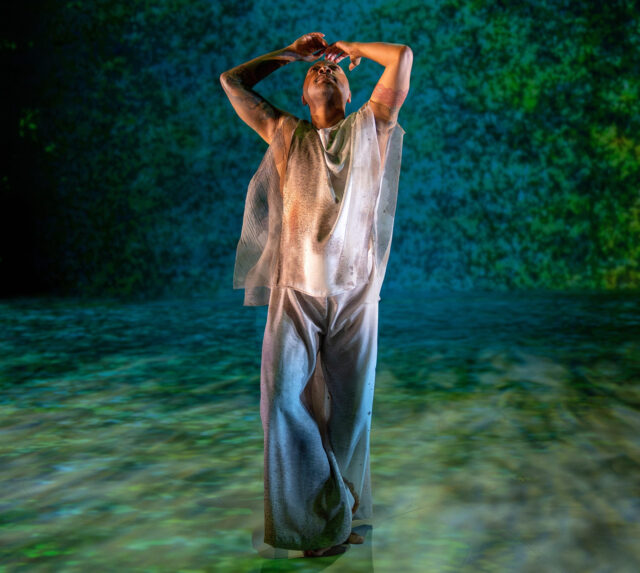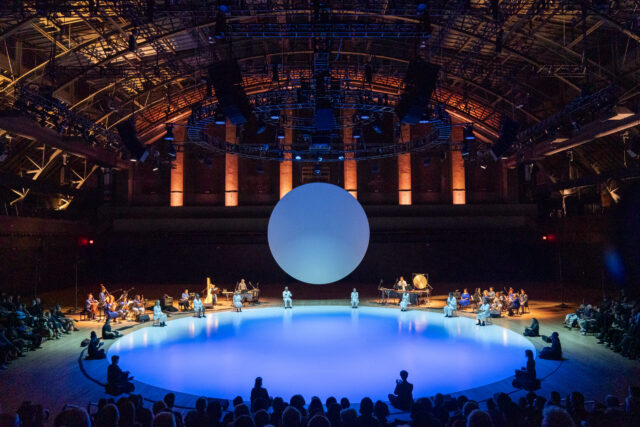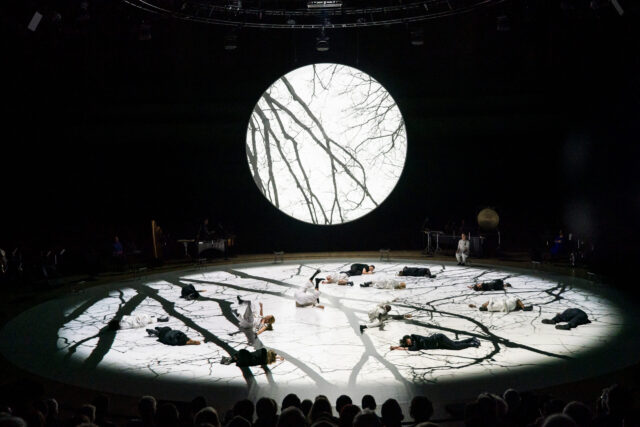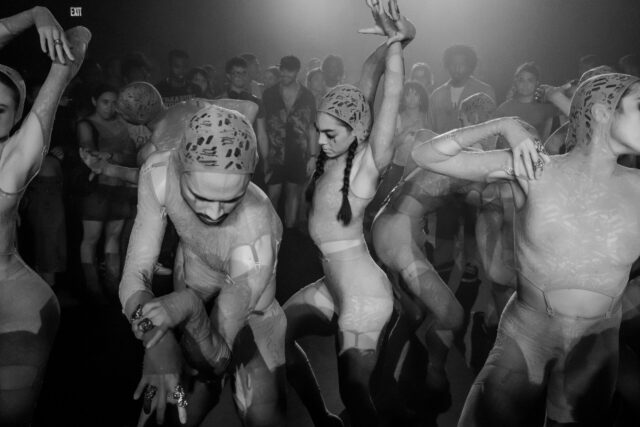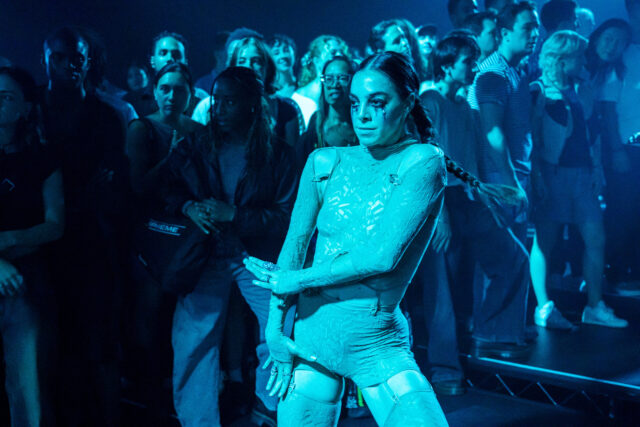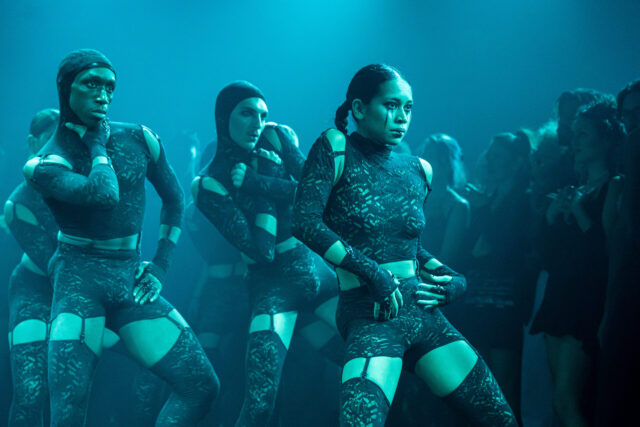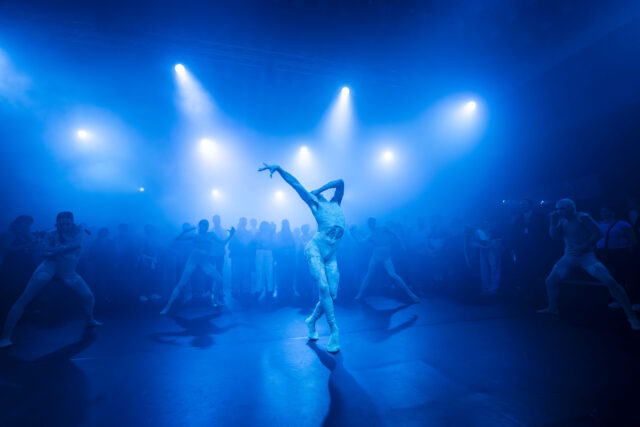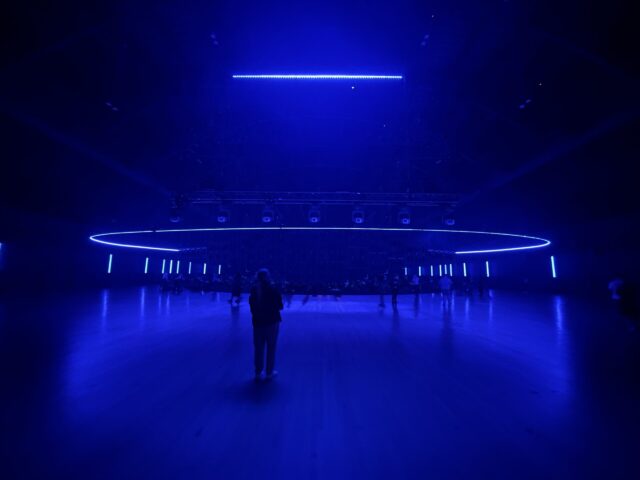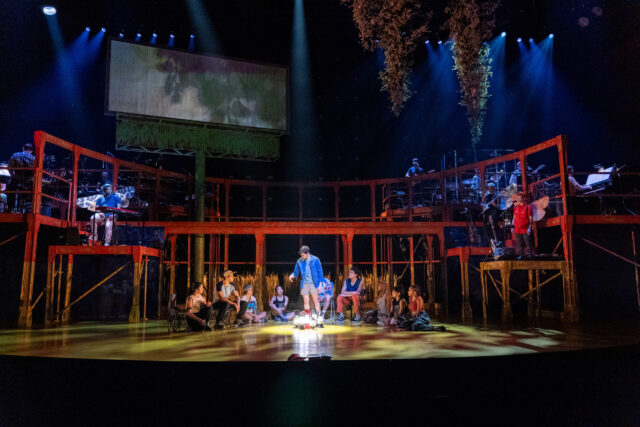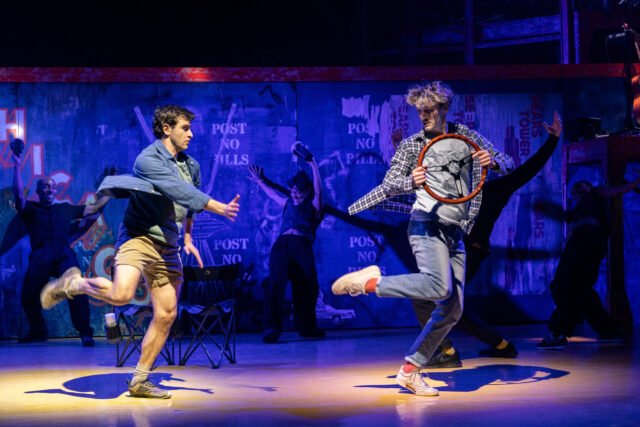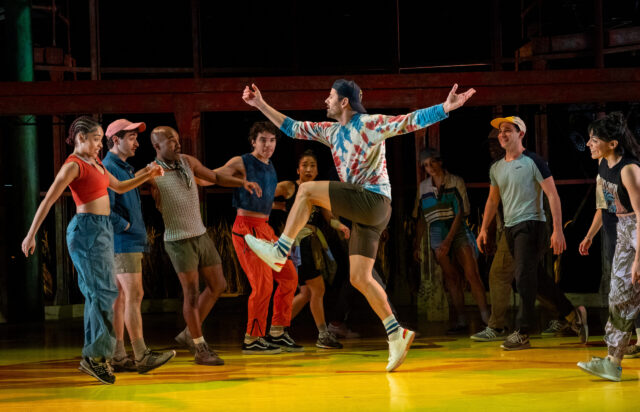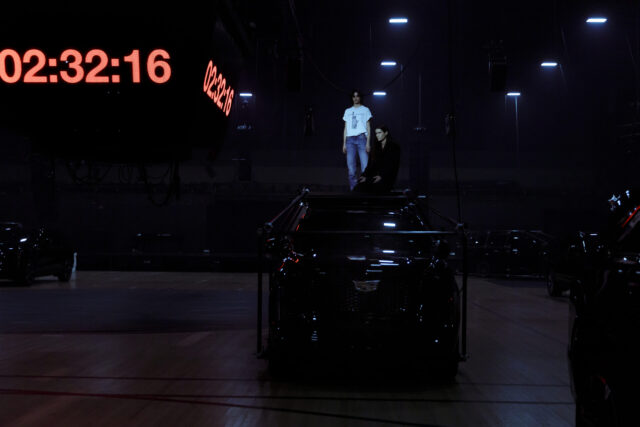
Anne Imhof reimagines Romeo and Juliet in Doom: House of Hope at the armory (photo by Nadine Fraczkowski / courtesy the artist, Galerie Buchholz, Sprüth Magers, and Park Ave. Armory)
DOOM: HOUSE OF HOPE
Park Avenue Armory, Wade Thompson Drill Hall
643 Park Ave. at 67th St.
March 3–12, $60
212-933-5812
www.armoryonpark.org
“What less than doomsday is the prince’s doom?” Friar Laurence asks Romeo in William Shakespeare’s tragic tale Romeo & Juliet.
Because of its massive 55,000-square-foot Wade Thompson Drill Hall, Park Ave. Armory has been home to numerous unique theatrical productions and art installations, involving such unusual elements as thirty tons of clothing (Christian Boltanski’s No Man’s Land), wooden swings hanging seventy feet from the ceiling (Ann Hamilton’s The Event of a Thread), one hundred bleating sheep (Heiner Goebbels’s De Materie), and a dark, mysterious heath (Kenneth Branagh’s Macbeth).
Now Berlin-based Golden Lion winner Anne Imhof has transformed the hall into an enormous prom gym, filling the space with more than fifty actors, dancers (ABT, modern, flexn, line), skateboarders, and musicians, twenty-six Cadillac Escalades, a Jumbotron, and other inspiring elements for Doom: House of Hope, a three-hour multidisciplinary reimagining of Romeo and Juliet, running March 3–12. Curated by Klaus Biesenbach, the durational performance features Sihana Shalaj, Levi Strasser, and Devon Teuscher as Romeo; Talia Ryder and Remy Young as Juliet; assistant director and costumer Eliza Douglas, choreographer Josh Johnson, Cranston Mills, and Connor Holloway as Mercutio; Jakob Eilinghoff, Arthur Tendeng, and Daniil Simkin as Benvolio; and Efron Danzg, vocalist Lia Wang, and Simkin as Tybalt. Among the other characters are Vinson Fraley and Toon Lobach as angels, Perla Haney-Jardine as the critic, Tess Petronio as the photographer, Casper von Bulow as the director and the revolutionary, Coco Gordon Moore as the poet, Tahlil Myth as the storyteller, and Henry Douglas as the gamer, offering yet more twists on the traditional tragedy.
The band, under the musical direction of Ville Haimala, consists of Sharleen Chidiac on guitar, Eilinghoff on bass, Eva Bella Kaufman on drums, and James Shaffer on guitar, with vocals by Lia Wang. The score ranges from Johann Sebastian Bach, Gustav Mahler, Franz Schubert, and Pyotr Ilyich Tchaikovsky to the Doors, Radiohead, and Frank Sinatra, along with original compositions by ATK44, Douglas, Haimala, Imhof, Lia Lia, Jacob Madden, and Strasser. In addition to Shakespeare, the text collects quotes from Jean Genet, Heinrich Heine, and Raymond Moody and writings about George Balanchine, John Cranko, Dieter Gackstetter, Bruce Nauman, Jerome Robbins, Tino Sehgal, and others.
The set is by sub, with sound by Mark Grey and lighting by the masterful Urs Schönebaum, who has dazzled audiences with his work on such previous armory productions as Inside Light and Doppelganger.
As its title states, the immersive show recognizes the doom so many feel now, the increasing anxiety over the state of the planet, while also seeing a potentially bright future.
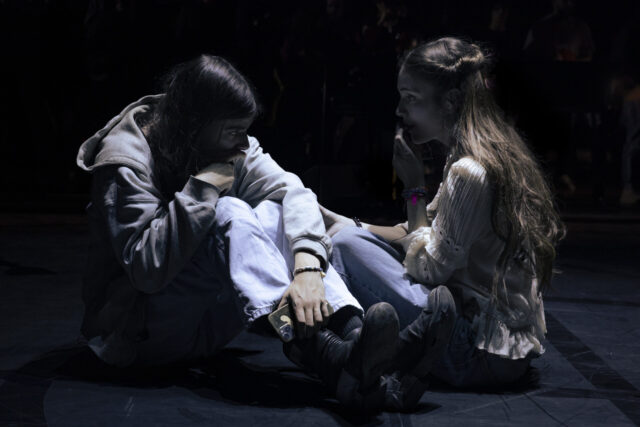
Romeo (Levi Strasser) and Juliet (Talia Ryder) face doom and hope in Anne Imhof extravaganza at the armory (photo by Nadine Fraczkowski / courtesy the artist, Galerie Buchholz, Sprüth Magers, and Park Ave. Armory)
A few moments after Friar Laurence predicts the worst, Romeo tells him, “Hang up philosophy. / Unless philosophy can make a Juliet, / Displant a town, reverse a prince’s doom.” Perhaps there is a way out of this mess we’re in, although the Bard’s original play does not exactly end happily.
On March 11 at 5:30, Imhof, whose other works include Sex, Natures Mortes, and Angst I–III, will participate in an artist talk about Doom: House of Hope with writer and curator Ebony L. Haynes.
[Mark Rifkin is a Brooklyn-born, Manhattan-based writer and editor; you can follow him on Substack here.]
